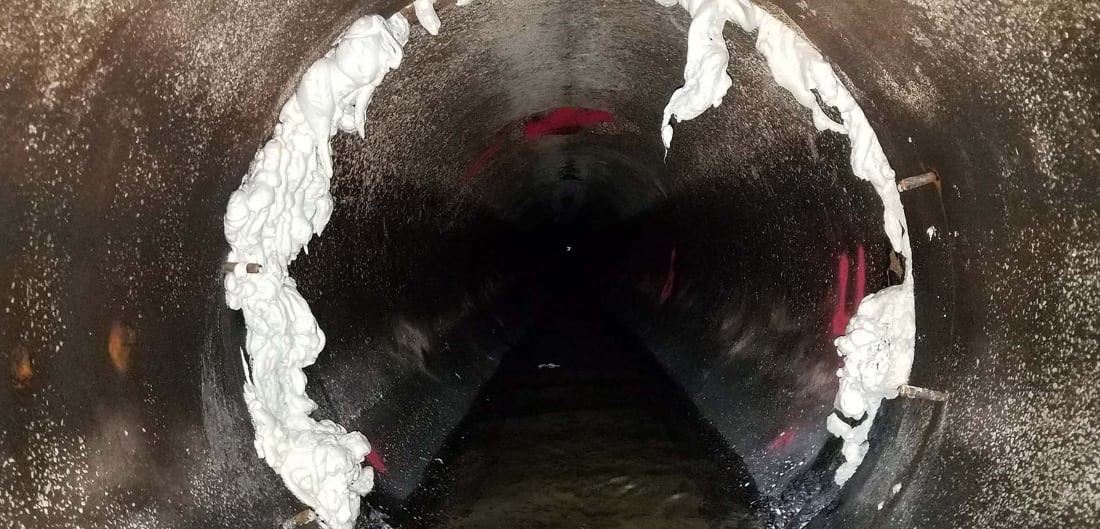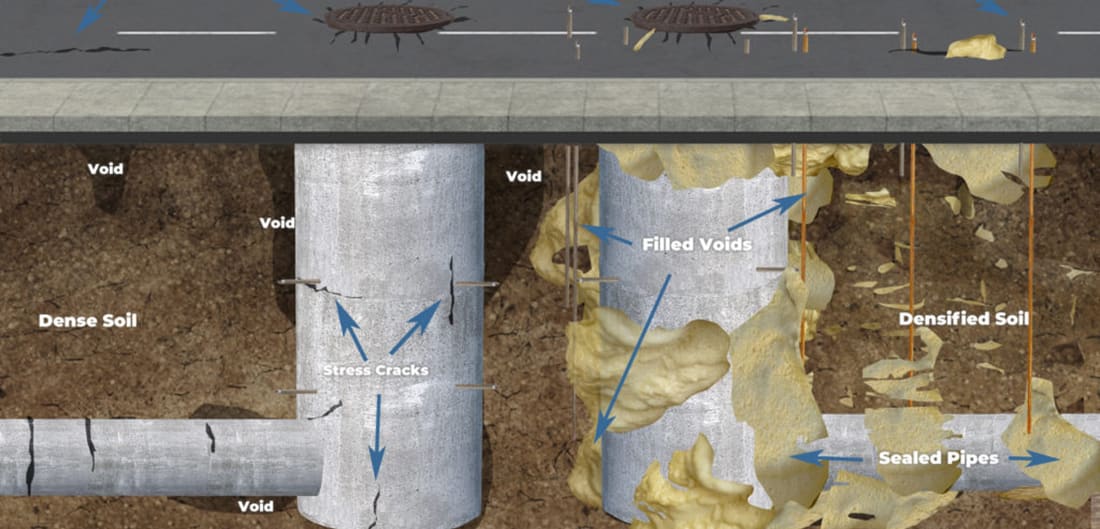How Does Polyurethane Work in Sewer Infrastructure Repair?
When it comes to the construction and transportation industries, polyurethane is one of the most versatile and flexible materials in the world.
In sewer infrastructure repair, polyurethane has several useful applications. Polyurethane foam can be used to treat inflow and infiltration issues in manholes, pipe joints, laterals, culverts, and outfalls.
Polyurethane’s Role in Infrastructure Repair
When it comes to the construction and transportation industries, polyurethane is one of the most versatile and flexible materials in the world. In its various forms, polyurethane has many applications from coatings, sealants, and adhesives to void filling, structural support, and insulation. As such, polyurethane’s use within the construction industry has steadily grown especially in sewer infrastructure repair projects.
In sewer infrastructure repair, polyurethane has several useful applications. Polyurethane foam can be used to treat inflow and infiltration issues in manholes, pipe joints, laterals, culverts, and outfalls. It can also seal off and prevent water intrusion to utility boxes, wet wells, and pump stations. Hydrophobic polyurethanes perform exceptionally well in wet conditions, making it the perfect choice for these types of repairs.
Using polyurethane for infrastructure repair has many benefits. The material is lightweight, affordable, and fast curing. Despite its light weight, this closed-cell foam has strong structural properties. It’s also minimally invasive and environmentally inert. Polyurethane repair projects require zero-excavation, which results in a small project footprint.

How Does it Work?
Polyurethane foam is created with a two-part solution. Part A is a chemical called MDI, or Methylene Diphenyl Diisocyanate (also known as ISO) while Part B is resin, a combination of polyols, catalysts, blowing agents, and other components. The two-part solution is mixed using an impingement gun and injected into voids around the affected asset. Tubes can be used to inject the polyurethane into particularly deep or large voids, or otherwise inaccessible areas.
Once the polyurethane is injected, it begins to expand to fill the void and compact unconsolidated soils around the infrastructure asset. The polyurethane will follow the path of least resistance to fill and compact soils. As it does so, it will press against the asset, creating a tight seal and blocking off any cracks or other openings that could allow for water and soil to infiltrate. Due to its hydrophobic properties, the polyurethane will displace any water that surrounded the asset, ensuring a dry environment and preventing damage from moisture.

Get Started with NCFI
Read More Blogs & News
Jun 12, 2024
Charlie Lerman, The Grout Geek, Joins NCFI the Geotechnical Team
We are excited to welcome Charlie Lerman, aka “The Grout Geek,” as our new Product Line Manager for Single Component Polyurethanes and Western Territory Manager at NCFI Polyurethanes’ Geotechnical division.
Jul 19, 2023
Geotechnical Training Courses
Our Geotechnical Training Course give contractors hands-on expertise in cutting-edge techniques, equipment maintenance, polyurethane behavior, injection design, various applications, and single and dual component systems.
Feb 27, 2025
Announcing the IPA Award Winner – Expert’s Choice goes to NCFI Terrapin!
NCFI Terrapin wins the Expert’s Choice award at the IPA Awards! This achievement highlights our commitment to innovation and excellence in geotechnical solutions.
We Have Partnership Down to a Science
We understand the challenges you face, and we’re here to help. Reach out today, and let's work together to find the best solution tailored to your needs with the highest-quality polyurethane foam products available.